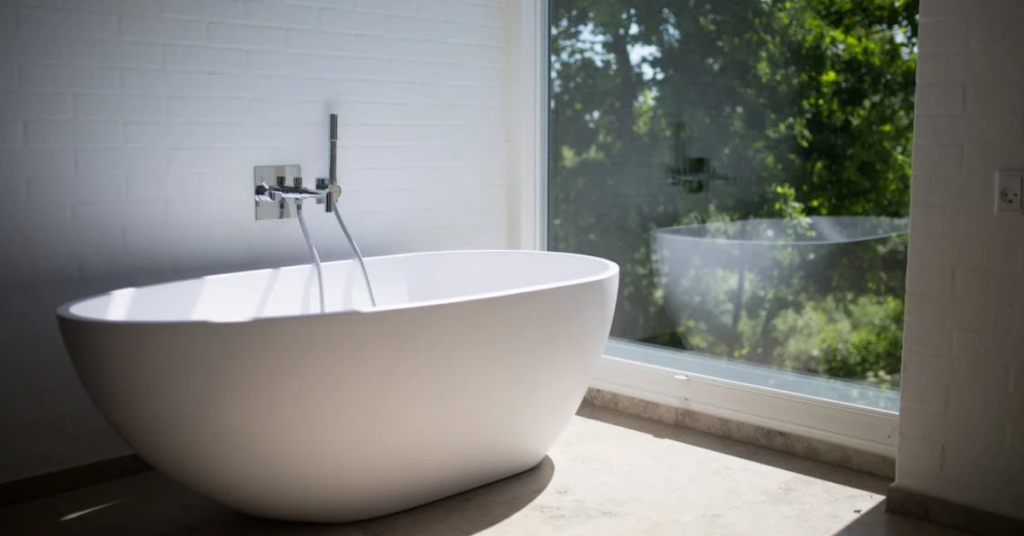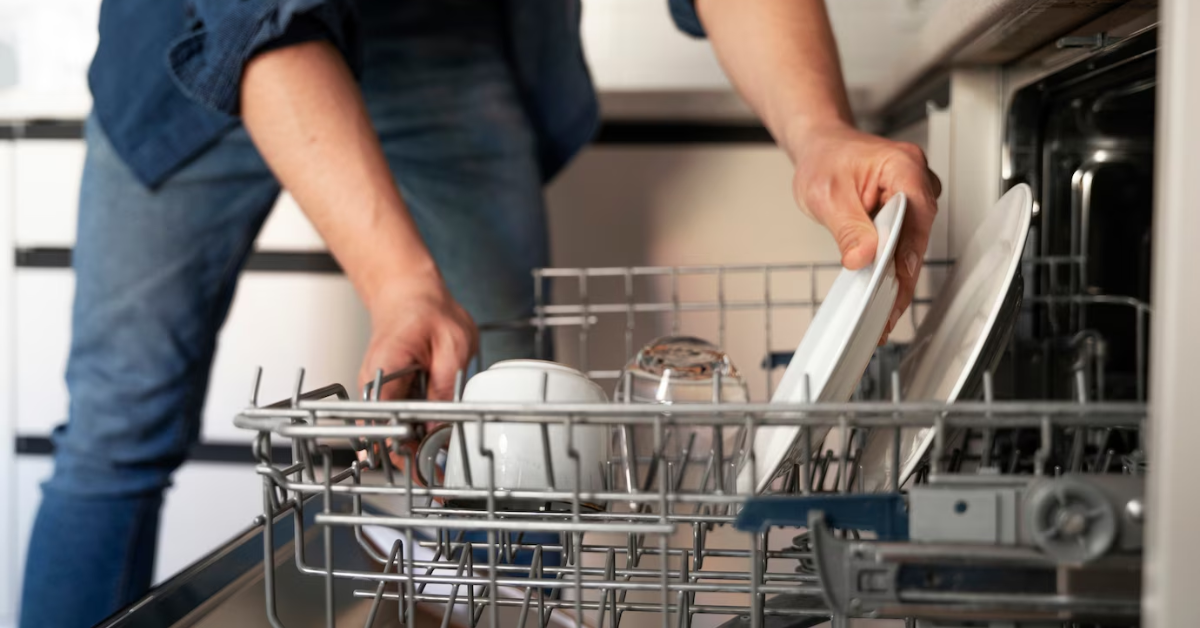Cleaning Salt Stains During Winter Months
Understand what is staining your floors (and clothes) during winter months and learn how to clean it.
Minnesota ice? Let’s face it, the Midwest gets a hearty dose of winter. A blizzard in October isn’t uncommon. In fact, the earliest snowstorm recorded in the Midwest happened in September of 1942. We are no strangers to snow, slush, and ice.
But in Minnesota, salt isn’t just a winter issue—it’s a way of life. From the de-icing salt on roads and sidewalks during icy months to salt tracked in from lake homes, this state deals with salt stains year-round. The challenge? Salt doesn’t just disappear. It leaves stubborn residue on floors, carpets, shoes, and even clothing, damaging surfaces if not cleaned promptly. Here’s how Minnesotans can effectively manage salt buildup and maintain clean homes.
What Causes Salt Residue and Build-Up?
Minnesota’s reliance on de-icing compounds includes:
- Salt (sodium chloride)
- Calcium chloride
- Magnesium chloride
- Potassium chloride
These compounds are essential for keeping roads and sidewalks safe during icy winters but often get tracked into homes. During summer, salt residue from cabins and lakefront properties can also sneak inside. Regular cleaners fail to neutralize the high pH of salt residue, leaving sticky or damaging streaks on surfaces.
Local Problem, Local Solutions
Winter Salt in Urban Minnesota
In Minneapolis and St. Paul, salt from city sidewalks and parking lots is unavoidable. Snow mixed with de-icing compounds gets tracked indoors, staining floors and carpets. Homes in dense neighborhoods often see heavy salt buildup at entryways, mudrooms, and near windowsills where melted snow puddles.
When moving out of a property in Minneapolis or St. Paul, salt stains can leave a bad impression on landlords or buyers. MaidXChange’s move-out cleaning services handle these stains effectively, ensuring your floors and carpets are spotless and ready for the next occupants.
Summer Salt at Lake Homes
From Duluth to the Brainerd Lakes area, summer activities near saltwater pools and docks bring their own challenges. Wet sandals and towels can leave salt streaks on hardwood floors or upholstery, requiring extra care.
Agricultural Salt in Rural Areas
Minnesota’s rural residents may also encounter salt residue from livestock water softeners or road dust near farms. These unique salt issues require tailored cleaning strategies to protect wood, tile, and fabrics.
Two Ways to Tackle Salt Residue: DIY or Professional Help
DIY Cleaning
If you’re dealing with small or isolated salt stains, try these DIY methods:
- Floors: Mix 1 gallon of warm water with 1 cup of white vinegar for a natural cleaning solution.
- Carpets: Use a vinegar-and-dish soap mixture to spot-treat salt-stained areas.
- Shoes and Clothes: Gently clean with a diluted vinegar solution and air dry.
Professional Cleaning
For larger stains, heavy traffic areas, or persistent salt buildup, call MaidXChange. We specialize in eco-friendly cleaning methods designed for Minnesota homes. From tackling salt at urban entryways to summer dockside messes, we’ve got you covered.
How to Remove Salt Residue from Floors
How to Get Snow Salt Off Hardwood Floors
Hardwood floors are especially vulnerable to salt damage. Follow these steps:
- Prepare a solution: Mix 1 gallon of warm water with 1 cup of white vinegar.
- Spot test first: Test the solution in an inconspicuous area to ensure it’s safe for your floor’s finish.
- Clean the floor: Use a microfiber mop or soft cloth to gently rub the salt stains in circular motions.
- Dry thoroughly: Wipe up any remaining moisture with a clean, dry towel to prevent water damage.
How to Get Salt Off Tile or Laminate Floors
- Sweep or vacuum to remove loose particles.
- Use a vinegar-water solution (1:16 ratio) or a specialized floor cleaner designed for de-icing compounds.
- Mop the floor, focusing on areas with visible buildup.
- Rinse with clean water and dry with a soft cloth to avoid streaks or sticky residues.
Pro Tip: Don’t let salt sit too long, as it can degrade finishes and make cleanup harder.
How to Remove Salt Residue from Carpets
DIY Recipe for Salt Removal
Ingredients:
- 1 cup of hot water
- 1 cup of white vinegar
- ¼ cup of liquid dish soap (optional for tough stains)
Steps:
- Vacuum first: Use a soft brush attachment to loosen embedded salt before vacuuming thoroughly.
- Apply the solution: Spray the mixture lightly onto stained areas and let sit for 5-10 minutes.
- Blot the stain: Use a clean cotton cloth to gently blot the area, lifting the salt residue without scrubbing.
- Rinse and repeat: If needed, blot with a damp cloth to remove any cleaning solution, then dry with a towel.
- Final vacuum: Once dry, vacuum the area again to restore the carpet’s texture.
Important: Always test the solution on an inconspicuous area first to avoid discoloration.
Quick Tips for Preventing Salt Build-Up
- Use entryway mats or rugs to trap salt before it spreads.
- Remove shoes immediately upon entering the house.
- Sweep or vacuum frequently to pick up loose particles.
- Wipe up puddles near windows and entryways to avoid salt streaks.
Cleaning Salt Stains During Winter Months
Understand what is staining your floors (and clothes) during winter months and learn how to clean it.
Minnesota ice? Let’s face it, the Midwest gets a hearty dose of winter. A blizzard in October isn’t uncommon. In fact, the earliest snowstorm recorded in the Midwest happened in September of 1942. We are no strangers to snow, slush, and ice.
But in Minnesota, salt isn’t just a winter issue—it’s a way of life. From the de-icing salt on roads and sidewalks during icy months to salt tracked in from lake homes, this state deals with salt stains year-round. The challenge? Salt doesn’t just disappear. It leaves stubborn residue on floors, carpets, shoes, and even clothing, damaging surfaces if not cleaned promptly. Here’s how Minnesotans can effectively manage salt buildup and maintain clean homes.
What Causes Salt Residue and Build-Up?
Minnesota’s reliance on de-icing compounds includes:
- Salt (sodium chloride)
- Calcium chloride
- Magnesium chloride
- Potassium chloride
These compounds are essential for keeping roads and sidewalks safe during icy winters but often get tracked into homes. During summer, salt residue from cabins and lakefront properties can also sneak inside. Regular cleaners fail to neutralize the high pH of salt residue, leaving sticky or damaging streaks on surfaces.
Local Problem, Local Solutions
Winter Salt in Urban Minnesota
In Minneapolis and St. Paul, salt from city sidewalks and parking lots is unavoidable. Snow mixed with de-icing compounds gets tracked indoors, staining floors and carpets. Homes in dense neighborhoods often see heavy salt buildup at entryways, mudrooms, and near windowsills where melted snow puddles.
Summer Salt at Lake Homes
From Duluth to the Brainerd Lakes area, summer activities near saltwater pools and docks bring their own challenges. Wet sandals and towels can leave salt streaks on hardwood floors or upholstery, requiring extra care.
Agricultural Salt in Rural Areas
Minnesota’s rural residents may also encounter salt residue from livestock water softeners or road dust near farms. These unique salt issues require tailored cleaning strategies to protect wood, tile, and fabrics.
Two Ways to Tackle Salt Residue: DIY or Professional Help
DIY Cleaning
If you’re dealing with small or isolated salt stains, try these DIY methods:
- Floors: Mix 1 gallon of warm water with 1 cup of white vinegar for a natural cleaning solution.
- Carpets: Use a vinegar-and-dish soap mixture to spot-treat salt-stained areas.
- Shoes and Clothes: Gently clean with a diluted vinegar solution and air dry.
Professional Cleaning
For larger stains, heavy traffic areas, or persistent salt buildup, call MaidXChange. We specialize in eco-friendly cleaning methods designed for Minnesota homes. From tackling salt at urban entryways to summer dockside messes, we’ve got you covered.
How to Remove Salt Residue from Floors
How to Get Snow Salt Off Hardwood Floors
Hardwood floors are especially vulnerable to salt damage. Follow these steps:
- Prepare a solution: Mix 1 gallon of warm water with 1 cup of white vinegar.
- Spot test first: Test the solution in an inconspicuous area to ensure it’s safe for your floor’s finish.
- Clean the floor: Use a microfiber mop or soft cloth to gently rub the salt stains in circular motions.
- Dry thoroughly: Wipe up any remaining moisture with a clean, dry towel to prevent water damage.
How to Get Salt Off Tile or Laminate Floors
- Sweep or vacuum to remove loose particles.
- Use a vinegar-water solution (1:16 ratio) or a specialized floor cleaner designed for de-icing compounds.
- Mop the floor, focusing on areas with visible buildup.
- Rinse with clean water and dry with a soft cloth to avoid streaks or sticky residues.
Pro Tip: Don’t let salt sit too long, as it can degrade finishes and make cleanup harder.
How to Remove Salt Residue from Carpets
DIY Recipe for Salt Removal
Ingredients:
- 1 cup of hot water
- 1 cup of white vinegar
- ¼ cup of liquid dish soap (optional for tough stains)
Steps:
- Vacuum first: Use a soft brush attachment to loosen embedded salt before vacuuming thoroughly.
- Apply the solution: Spray the mixture lightly onto stained areas and let sit for 5-10 minutes.
- Blot the stain: Use a clean cotton cloth to gently blot the area, lifting the salt residue without scrubbing.
- Rinse and repeat: If needed, blot with a damp cloth to remove any cleaning solution, then dry with a towel.
- Final vacuum: Once dry, vacuum the area again to restore the carpet’s texture.
Important: Always test the solution on an inconspicuous area first to avoid discoloration.
Quick Tips for Preventing Salt Build-Up
- Use entryway mats or rugs to trap salt before it spreads.
- Remove shoes immediately upon entering the house.
- Sweep or vacuum frequently to pick up loose particles.
- Wipe up puddles near windows and entryways to avoid salt streaks.



